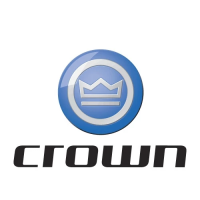335
M7.5-18.0-003
08 Rev. 7/07
LIFTING MECHANISM
Lift Chains
Tight Joints
All joints in lift chain should flex freely. Tight joints resist
flexure, increase internal friction, thus increasing chain
tension required to lift a given load. Increased tension
accelerates wear and fatigue problems. Refer to Figure
16848.
Tight joints in lift chains can be caused by:
1. Bent pins or plates,
2. Rusty joints,
3. Peened plate edges.
Oil rusty chains and replace chains that appear bent or
peened. Peening of plate edges may be caused by
worn pulleys, unusually heavy loads, or chain sliding
past a guide or obstruction in the mast.
Protruding or Turned Pins
Heavily loaded chains operating with little lube gener-
ate tremendous friction between pin and plates (pin
and bushing in roller chain). In extreme cases, the fric-
tional torque in the joint can actually turn pins in the
press-fit outside plates.
If chain is allowed to operate in this condition, the pins
slowly work out of the chain, causing chain failure.
Turned pins can be quickly spotted because the flats
on the "V" heads are no longer in line. Refer to Figure
16849, pin has turned 45 degrees. Chains with turned
or protruding pins should be replaced immediately.
Never attempt to repair the chain by driving pins back
into the chain.
Chain Side Wear
A continuous wear pattern on pin heads and outside
plates indicates misalignment. Misalignment can be
caused by two different factors: unequal chain tension
or nonalignment between pulleys and chain anchors.
• Unequal Chain Tension - When a lift chain is in-
stalled or adjusted, care should be taken to "load"
the chains evenly. When changing fork heel height
or platform height for example, the chain anchors
should be loosened until both forks come in con-
tact with the floor. At this point both chains should
display the same tension or slack. The chain an-
chor nuts should be tightened an equal number of
revolutions on both chain anchors to put equal ten-
sion on chains. When the desired height setting is
achieved the locking nut should be tightened to se-
cure setting.
• Non Alignment of Lifting Components - Non
alignment of the pulley and chain due to incorrect
shimming of the mast or bent or damaged mast or
cylinder components can also contribute to chain
side wear. A check for this condition is to place the
truck on a level area in your maintenance area. Af-
ter supporting the fork carriage, disconnect each
end of the lift chain at the chain anchor and visually
inspect its alignment with the anchor slots.
Figure 16848
Figure 16849
Crown 1984 PF5856-3 Rev. 7/07

